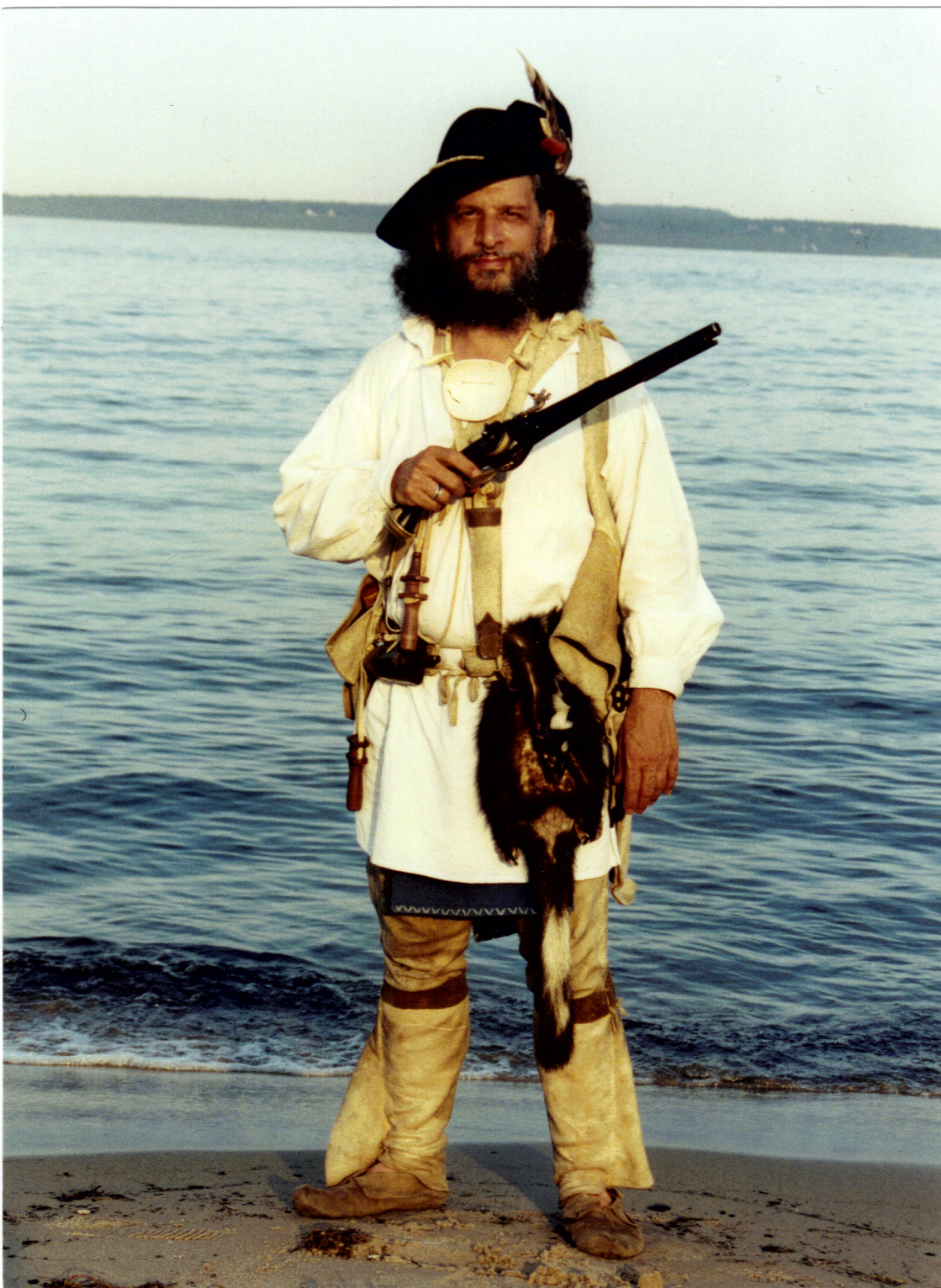Olivier LeTardif arrived in New France within about a decade of the founding of Quebec in 1608. He was sent by Champlain in about 1618 to live for several years in the interior, to the north and west of the St. Lawrence Valley. He first resided with the Montagnais, then with the Algonkins, and finally with the Hurons. In each instance, he served as a trade ambassador, acting as translator and cultural liaison between the native group and the French. Before 1629, he became the interpreter for the settlement of Quebec in each of the three main native languages, and he eventually managed the fur trade company of the colony.
Charles Sevestre emigrated from France in 1636, and served as the clerk and manager of the warehouse of the fur trade company of New France through the 1640s and 1650s, at Quebec.
Claude David was one of the very earliest of the Frenchmen who ventured into the interior specifically to trade. (Until 1653, Frenchmen in the interior only served as trade ambassadors, rather than as actual traders; these ambassadors encouraged the native populations to paddle out to the St. Lawrence settlements every year to trade there.) Claude David lived with the Ottawas, Tionontates, and Hurons in the area of Chequamegon Bay on western Lake Superior from 1660 to 1663. Eight years after he departed from these three native groups, they moved eastward to establish the settlement of St. Ignace, at the Straits of Mackinac. After Claude’s three year stint in the interior, he served as a stay-at-home investor, backing other traders. For example, he formed a partnership in 1673-74 with Nicholas Perrot, who became one of the most famous of the early traders in the Wisconsin-Minnesota region.
Francois Brunet dit Le Bourbonnais was hired by LaSalle as a voyageur on four occasions between 1675 and 1677. He was engaged to haul freight for LaSalle between Montreal and Ft. Frontenac, at the eastern end of Lake Ontario. Over the following decade or more, Brunet was also employed as a trader in various areas, such as at St. Ignace in 1685-87. This was only fourteen years after this community had been permanently established at the Straits, and only two years after Ft. de Buade had been founded there. When Brunet departed from the Straits for Montreal in 1686, after his first trading period there, he and his voyageur partner had gathered 26 extra packs of beaver pelts that they could not fit into their canoe with the rest of their furs and hides. So they left these packs behind with a trusted friend, to return on another voyage to collect them. Brunet later served as an investor financing other traders, including some who worked in the Illinois Country in 1688-89. (It is interesting to note that there were only eight generations between this Brunet ancestor and Tim Kent.)
Mathieu Brunet dit Lestang spent the years 1683-84 trading in what was then called the “Ottawa Country,” which was the upper Great Lakes region. His next venture spanned the years 1685 to 1687, which he spent in the upper Mississippi region of Wisconsin and Minnesota as a trading colleague of Nicholas Perrot.
Jean LaLonde dit L’Espérance was one of the voyageurs who was hired by Cadillac in 1696, to carry out trading for the officer during his last year as the commandant of Ft. de Buade at St. Ignace. According to Lalonde’s hiring contract, he was permitted to take to the Straits two pairs of leggings, six shirts, two hooded coats, a blanket, a gun, and twelve pounds of tobacco. At the end of his year of employment, he was allowed to trade any and all of these items for his own profit, before coming out to Montreal.




